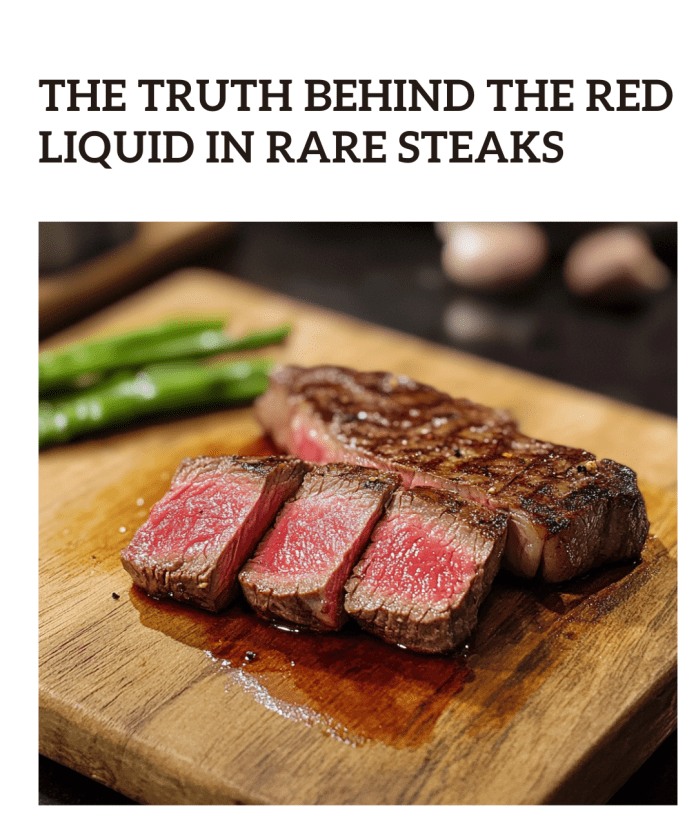ADVERTISEMENT
For enthusiasts of a well-cooked steak, nothing is more appealing than the sight of a rare, juicy cut. However, this visual delight might cause discomfort for others due to a widespread misconception: the belief that the red liquid seeping from a rare steak is blood. This notion often leads to concerns that the meat is undercooked or potentially harmful. Yet, the reality is quite the opposite, and it’s important to understand what this red juice actually is.
Unveiling the Red Juice: It’s Not Blood!
What you notice in a rare steak is not blood, but a blend of water and a protein called myoglobin. Myoglobin resides within the muscle tissues and is responsible for the red to pinkish hue seen in uncooked and undercooked meats. As the steak cooks, the heat causes myoglobin to release both water and pigment, lending the meat its tempting juiciness and vibrant color.
Understanding Meat’s Composition
Typically, meat consists of water, protein, and fat. Cooking affects these elements differently based on the applied heat and method. The protein myoglobin, found abundantly in muscle tissue, significantly influences the meat’s color and overall appearance.
Role and Characteristics of Myoglobin
Myoglobin, a protein stored in animal muscle fibers, is crucial for oxygen storage needed during physical activity. Similar to hemoglobin—responsible for oxygen transport in blood—myoglobin’s iron content binds to oxygen, providing it with a distinctive red color.
The concentration of myoglobin in meat varies by the type of animal, its age, and how active it was, explaining why meats like beef and lamb appear darker than chicken or pork.
Demystifying the Myth of Blood in Steak
It’s essential to clarify that the liquid seen in cooked steak isn’t blood. The slaughtering process involves draining most of the blood. The “juices” that emerge during cooking are primarily a mixture of water and myoglobin.
Why the Misunderstanding?
